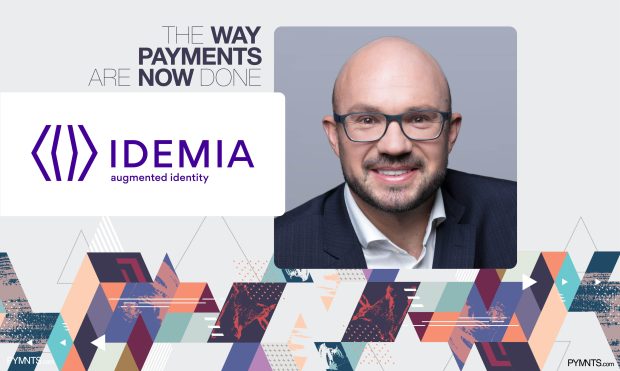Mobile Phones: Connecting the Physical and Digital Payment Experience

“Over the past 18-20 months, the pandemic and ever-growing “everything now” culture has accelerated the transformation of traditional customer interactions and replaced many of the remaining physical touchpoints – including branch visits, paper account statements and card activation – with digital equivalents,” says Matt Cole, CEO of Secure Enterprise Transactions, IDEMIA. In “The Way Payments Are Now Done,” Cole explains how the smartphone is enabling all of these digital-first experiences for on-the-go customers.
The rise in global smartphone adoption has created a culture of immediacy and constant innovation that has penetrated all sectors, accelerating the need for innovation in areas such as the financial industry, where client interactions remain. Over the past 18-20 months, the pandemic and ever-growing “everything now” culture has accelerated the transformation of traditional customer interactions and replaced many of the remaining physical touchpoints – including branch visits, paper account statements and card activation – with digital equivalents. These digital-first experiences blend the best aspects of the physical and digital worlds to reach on-the-go customers where they are and whenever they need. The link: the smartphone.
Mobile Banking Apps for an Enriched Cardholder Experience
Amid the pandemic and its resulting lockdowns, banks realized cardholders were heavily dependent on bank branches and physical card supply chains. Mobile banking apps have simplified and streamlined many processes that once required a trip to the bank.
For example, in the case of lost or stolen cards, mobile applications give banks a means to instantaneously provision a card that customers can use immediately and store in their third-party wallet app (Apple Pay, Google Pay, Samsung Pay, etc.), or access via the bank’s mobile application. The flexibility offered by these new digital-first features allows consumers to immediately get access to a digital form of payment means via their smartphone while waiting for the replacement card to be shipped.
Today, from their mobile banking app, cardholders can activate their card, report lost or stolen cards, order replacement cards, set spending limits, and automatically and immediately view recent card activity to identify and dispute suspicious transactions, or even benefit from rewards after each purchase.
Digital Wallets: Convenient Means for Contactless Payments
Going beyond applications, the mobile phone is no longer “just” a channel to access digital products or services, but also a vector for contactless payments via third-party digital wallets (i.e. Apple Pay, Google Pay, Samsung Pay, etc.) and mobile banking applications.
The mobile phone plays a central role in the payment experience by addressing the need for contactless interactions. Once “nice-to-have,” contactless payments have quickly become an essential service. They offer customers a simple way to pay, either with the tap of their phone or the scan of a QR code. These capabilities provide fast, intuitive experiences that are also hygienic and highly secure.
Today, more and more smartphones are equipped with biometrics via fingerprints or face recognition, allowing strong customer authentication (SCA) to secure transactions and enabling all sensitive operations to be performed through the device.
Smartphones: Ensuring Connections With Digital-First Customers
The banking ecosystem is well aware of what the consumer wants: simplicity and instantaneity – and innovative services don’t hurt, either. To cater to these evolving consumer expectations, it’s crucial to offer a broad spectrum of services.
The future of card payments is clearly pressing forward, as more and more physical card features blend with smartphone features. As a result, mobile banking apps are bound to become the preferred channel for consumers to access banking services and manage their cards across physical and digital form factors. Smartphones give consumers the keys to their own banking and payment experiences, offering adaptable services that can meet all their needs. Card issuers can take the best of the physical and digital worlds to forge a fantastic user experience, avoiding any friction or disruption.
